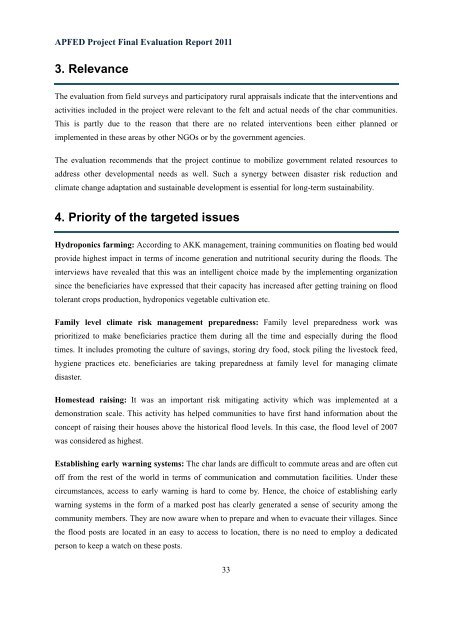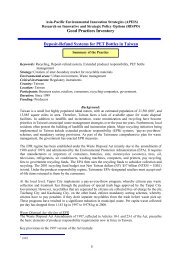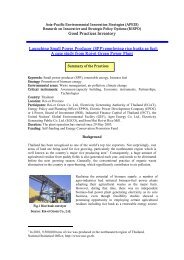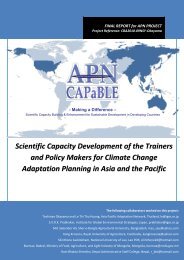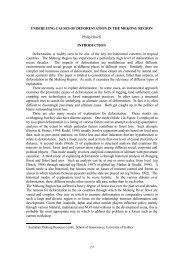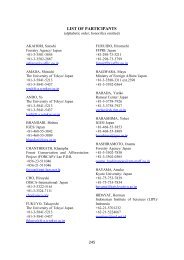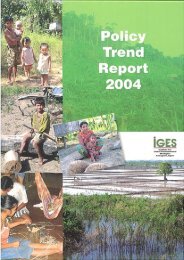final evaluation report akk_iges_final.pdf - IGES EnviroScope
final evaluation report akk_iges_final.pdf - IGES EnviroScope
final evaluation report akk_iges_final.pdf - IGES EnviroScope
You also want an ePaper? Increase the reach of your titles
YUMPU automatically turns print PDFs into web optimized ePapers that Google loves.
APFED Project Final Evaluation Report 2011<br />
3. Relevance<br />
The <strong>evaluation</strong> from field surveys and participatory rural appraisals indicate that the interventions and<br />
activities included in the project were relevant to the felt and actual needs of the char communities.<br />
This is partly due to the reason that there are no related interventions been either planned or<br />
implemented in these areas by other NGOs or by the government agencies.<br />
The <strong>evaluation</strong> recommends that the project continue to mobilize government related resources to<br />
address other developmental needs as well. Such a synergy between disaster risk reduction and<br />
climate change adaptation and sustainable development is essential for long-term sustainability.<br />
4. Priority of the targeted issues<br />
Hydroponics farming: According to AKK management, training communities on floating bed would<br />
provide highest impact in terms of income generation and nutritional security during the floods. The<br />
interviews have revealed that this was an intelligent choice made by the implementing organization<br />
since the beneficiaries have expressed that their capacity has increased after getting training on flood<br />
tolerant crops production, hydroponics vegetable cultivation etc.<br />
Family level climate risk management preparedness: Family level preparedness work was<br />
prioritized to make beneficiaries practice them during all the time and especially during the flood<br />
times. It includes promoting the culture of savings, storing dry food, stock piling the livestock feed,<br />
hygiene practices etc. beneficiaries are taking preparedness at family level for managing climate<br />
disaster.<br />
Homestead raising: It was an important risk mitigating activity which was implemented at a<br />
demonstration scale. This activity has helped communities to have first hand information about the<br />
concept of raising their houses above the historical flood levels. In this case, the flood level of 2007<br />
was considered as highest.<br />
Establishing early warning systems: The char lands are difficult to commute areas and are often cut<br />
off from the rest of the world in terms of communication and commutation facilities. Under these<br />
circumstances, access to early warning is hard to come by. Hence, the choice of establishing early<br />
warning systems in the form of a marked post has clearly generated a sense of security among the<br />
community members. They are now aware when to prepare and when to evacuate their villages. Since<br />
the flood posts are located in an easy to access to location, there is no need to employ a dedicated<br />
person to keep a watch on these posts.<br />
33


